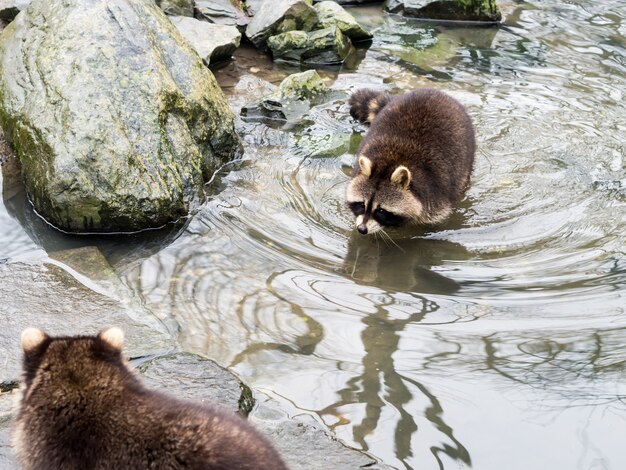10 Fascinating Facts about Otters

Otters are excellent swimmers and can hold their breath for up to eight minutes.
Otters have a special pocket in their loose skin where they keep their favorite rock.
Otters hold hands when they sleep in groups to prevent drifting apart.
Otters use stones to crack open their food, such as clams or crabs.
Otters have a waterproof fur coat which keeps them warm in the water.
Otters have a unique way of sliding down muddy slopes with their bellies.
Otters have a specialized diet, mainly consisting of fish and crustaceans.
Otters have a playful nature and love to engage in games like hide-and-seek.
Otters can close off their ears to prevent water from entering while swimming.
Otters have a high metabolic rate, which requires them to consume a large amount of food.
Otters have a denser fur coat than any other mammal, with about a million hairs per square inch.
Otters have a sensitive snout that helps them detect prey underwater.
Otters communicate using a variety of vocalizations, including whistles, chirps, and growls.
Otters have a strong maternal instinct and take excellent care of their young.
Otters are known to use tools, such as rocks, to crack open shellfish.
Otters have a pouch of skin under their forearms where they store their favorite snacks.
Otters have a playful sliding behavior, not just for fun but also to mark their territory.
Otters have long, flexible bodies and powerful tails, which aid in swimming.
10 Fascinating Facts about Otters part 2
Otters can dive up to 60 feet underwater in search of food.
Otters have a strong sense of smell that helps them locate prey in murky water.
Otters have been known to hold rock juggling contests with each other.
Otters can eat up to 25% of their body weight in one day.
Otters are known to wrap kelp around themselves to secure themselves while eating or resting.
Otters have a rough tongue that helps them groom their fur and remove dirt.
Otters have a playful curiosity and are often seen exploring their surroundings.
Otters have transparent eyelids that allow them to see underwater while protecting their eyes.
Otters have a thick layer of fat, called blubber, which helps insulate them in cold water.
Otters have a sliding technique called snowplowing where they use their tail to steer on snowy surfaces.
Otters have been observed using tools to dislodge and dismember prey, such as using rocks to open clam shells.
Otters have been known to construct slides on snow-covered hills just for fun.
Otters have webbed feet that make them excellent swimmers and require them to walk in a unique way on land.
Otters have a unique ability to rotate their hind feet, allowing them to swim both forward and backward.
Otters have specially adapted molars that help them crunch through the shells of their favorite prey.
Otters have been observed using branches to create makeshift rafts for resting or traveling together.
Otters have the densest fur of any animal, which traps air to keep them warm in cold water.
Otters have been seen using their tails as tools, such as a rudder while swimming or to carry objects.
Otters have a playful rivalry where they engage in playful wrestling matches to establish dominance.
Otters have a layer of air trapped in their fur that helps with buoyancy and insulation.
Otters have been trained to perform tasks, such as retrieving objects or navigating obstacle courses.
Otters have a unique way of catching fish, by using their front paws or by diving and chasing after them.
Otters have been observed using rocks as anvils to break open hard-shelled prey like crabs.
Otters have been known to stack rocks or shells on their chests to use as a makeshift table while eating.
Otters have a playful personality and often engage in games of tag or chase with fellow otters.
Otters have a specialized grooming behavior called gallivanting, where they roll and fluff their fur to keep it puffed up and warm.
Otters have a complex social structure and live in family groups known as rafts, which can consist of several generations of otters.

